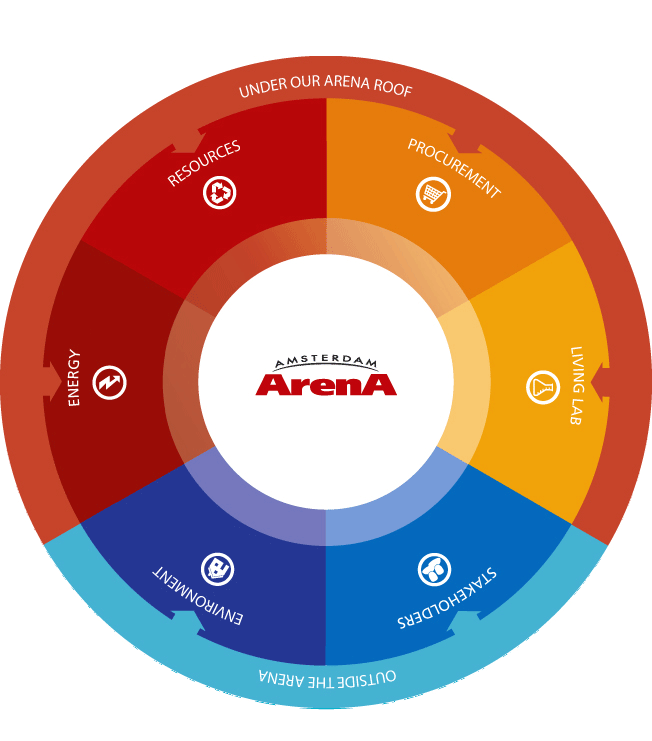
Sustainable and Functional LED Lighting for the Main Building
The ArenA’s new main building has a state-of-the-art LED lighting installation. Lighting expert Dutch Light Pro and producer Traxon Technologies (subsidiary of OSRAM), together with installation specialist Hulskamp, were responsible for the design and technical installation. The result: a user friendly, dynamic lighting system that contributes to the building’s functionality as well as to significant energy savings.
‘Cool or Warm’
The dynamic LED lights are aesthetic as well as functional. In a given area, the same lights provide ‘cool’ light at a business meeting, or ‘warmer’ light for a festive event.
User Friendly
The new lighting can be operated both centrally and per area. This is possible using control panels, as well as by a specially developed application for iPhones and iPads.
Saving Energy
The new lighting consumes approximately one third of the energy the old installation used. The ArenA also benefits from significant savings on replacement costs: a LED light bulb has a lifespan of 50,000 hours (a conventional light bulb 20,000 hours).
Maintenance
At the end of their lifespan, LED lights don’t stop working suddenly but gradually produce less light. Light bulbs do not need to be replaced on demand; this can be incorporated in scheduled maintenance. This is particularly an advantage for inaccessible lighting, such as lights located in the high ceilings.
The Future
Currently, 80% of the lighting in the ArenA’s main building consists of LEDs. In the future, this percentage will be even higher. Thanks to technological advancements, lighting the football pitch with LEDs will be possible in the foreseeable future.

